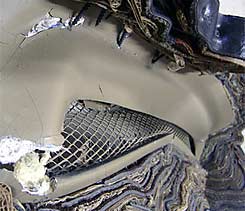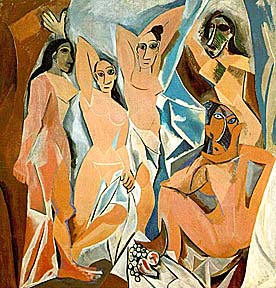[ UPDATE: In the following we take writer David Thompson to task for his article, Art Bollocks Revisited. Soon after publishing our critique, Mr. Thompson wrote to offer a refutation. Out of fairness and a desire for open dialog, we’ve decided to publish Thompson’s rebuttal in full at the end of this article. ]Art Bollocks Revisited is an article written by freelance writer and art critic, David Thompson, and published in the latest issue of
Eye: the International Review of Graphic Design. Thompson’s article starts off as a critique of postmodernist artspeak and ends up as a rancorous diatribe against the political left - held responsible by Thompson for its supposed intellectual authorship of postmodernism. The title of Thompson’s article refers to an essay written by Brian Ashbee for Art Review in 1999,
A Beginners Guide to Art Bollocks and How to be a Critic - which was a mocking critique of the gobbledygook jargon employed by postmodernist art critics and theorists.
Thompson is certainly correct in noting that the use of gibberish in postmodern artspeak has intensified from the time when Ashbee wrote his humorous article, and that since then,
"Art bollocks has become institutionalized, normalized and is now practically the default way of writing about art and culture for seasoned journalists and a-level students alike. Like Orwell’s Newspeak, art bollocks is variously used in a knowing way, as an in-joke, a private language, a posture, or maybe out of fear – to maintain some questionable status among equally questionable peers."
It’s hard
not to agree with Thompson on that score, but when he asserts that the hidden hand of Marxism is the nefarious force that gives impetus to postmodernist elites - you just have to roll your eyes. There are arch-conservatives, hysterical anti-communists, and new Victorians aplenty who insist that postmodernism is a left-wing phenomenon borne of Marxist philosophy, but the facts are in clear contradiction to such pronouncements.

[ This illustration of Karl Marx appeared as the cover of TIME Magazine for the publication’s Feb. 23, 1948 issue. It could serve as the illustration for David Thompson's 2006 attack on postmodernism, Art Bollocks Revisited. ] David Thompson’s allegations that the elites of the contemporary postmodern art establishment have fallen under the sway of Karl Marx - from artists and critics to curators and directors of museums and university art departments, is on the face of it totally ridiculous. At best his contention has the same ring to it as those charges made by some on the libertarian right, who believe the neoconservatives around President Bush all have roots in the revolutionary socialist Trotskyite left, and that Bush’s so-called liberation of Iraq was possible only because
"a Marxism of the Right has won the day in Washington." The L.A. Stuckist group refutes Thompson’s charges, not out of a sympathy with Marxism, but out of a dedication to fact finding and the pursuit of truth.
Some of the proof offered by Thompson of a Marxist cabal existing in postmodernist art circles, comes in his referring to a remark made by conceptual art stars Jake and Dinos Chapman in a 2003 debate with the chairman of the U.K. Institute of Contemporary Arts. Thompson alleges that the duo said: "You see, in our most humble opinion, the overt fetishisation of pastoral handicrafts by the bourgeoisie served the purpose of obscuring the true relations of Capital." That this murky neo-Marxist mumbo jumbo can be presented by Thompson as solid evidence of the undue influence of Marxism in the world of contemporary art is akin to saying that rock 'n roll is a communist conspiracy because Mick Jagger (now Sir Mick Jagger), was a youthful reader of Karl Marx.
In Art Bollocks Revisited, Thompson writes, "In its political aspect, postmodernism is almost entirely a left-wing phenomenon, placing great emphasis on alleged power relationships, real or imagined, and denouncing everything from clear textual meaning to notions of an independent and comprehensible reality as tools of political 'oppression.'" Thompson should know better than to make such a fatuous claim, as there are many on the left who denounce postmodernist thought as it is expressed in academic and artistic realms. Fredric Jameson is a Marxist literary critic and theorist best known for his book, Postmodernism: The Cultural Logic of Late Capitalism. In Jameson’s view, postmodernism represents the stultification and impediment of culture brought about by the enormous pressures of globalized corporate capitalism. David Harvey is another leading Marxist social theorist and a Distinguished Professor of Anthropology at the Graduate Center of the City University of New York. His book, The Condition of Postmodernity: An Enquiry into the Origins of Cultural Change, is a compelling and forceful critique of postmodern thought and the impact it has had upon visual art, architecture, literature and urban planning.
Professor Terry Eagleton, a British philosopher and literary critic whose critiques are deep-seated in the Marxist tradition, has offered strong disapproval for much of postmodern philosophy. Noam Chomsky is well known, not just as a leading scholar of linguistics at the Massachusetts Institute of Technology, but also as a major left-wing critic of U.S. foreign policy. He is completely dismissive of postmodern ideas, regarding them as "self-destructive tendencies." The aforementioned individuals are prominent left intellectuals in opposition to postmodernist thought, but since Thompson claims a "quasi-Marxist theoretical position" is held by postmodernists - how do actual Marxist political organizations regard postmodernist philosophy? If the World Socialist Web Site (WSWS) is any indication - it is held in very low esteem. Read what the Marxist WSWS has to say on the subject:
"Rather than indicating anything new in terms of ideas and conceptions, the diverse theses and texts of the post-modernists, exuding a contempt for genuine scientific method, cultural pessimism, individualism, obscurantism and a rejection of historical truth, point to an ideological dead end, the distorted reflection of a social order which itself has long run out of steam."
A withering condemnation of postmodernist art comes from Alan Woods, editor of the Marxist journal, Socialist Appeal, and the website, In Defense of Marxism. In his essay titled Capitalist fetishism and the decay of art, Woods denounces the likes of Jake and Dinos Chapman and takes to task the entire postmodernist conceptualist school.
In making his case that the left is behind postmodern philosophy both in academia and in the arts, David Thompson also mentions the infamous 1996 Sokal affair, where a physicist named Alan Sokal submitted a hoax article to the left-leaning publication Social Text, a postmodern journal dedicated to "cultural studies." In Sokal's own words, he had intentionally written a pseudo scientific paper displaying a total absence of "anything resembling a logical sequence of thought; one finds only citations of authority, plays on words, strained analogies, and bald assertions." The parody article was full of meaningless nonsense, but Social Text took the bait and unwittingly published what the author would later reveal as a major prank.
In writing about the Sokal affair, Thompson states that "Sokal attributed the acceptance of his parody to the proliferation of 'a particular kind of nonsense' among left-wing theoreticians," but Thompson removed an important fact from his version of the story - Alan Sokal’s own commitment to socialism and left-wing politics. Sokal explained his hoax in the following manner:
"Why did I do it? I confess that I'm an unabashed Old Leftist who never quite understood how deconstruction was supposed to help the working class. And I'm a stodgy old scientist who believes, naively, that there exists an external world, that there exist objective truths about that world, and that my job is to discover some of them."
Thompson cites the book Explaining Postmodernism by Professor Stephen Hicks, as if it were some type of Rosetta Stone that unlocks the secrets of postmodern art as a vast Marxist conspiracy. To put it briefly, part of Hicks’ argument is centered on his conviction that since the collapse of the Soviet Union, stalwart believers of Marxism have retreated to the universities where they’ve become ensconced tenured professors who peddle leftist socialism to unsuspecting students. As Hicks’ states in his book:
"Postmodernism is a response to the crisis in faith of the academic far Left. Its epistemology justifies the leap of faith necessary to continue believing in socialism, and the same epistemology justifies using language not as a vehicle for seeking truth but as a rhetorical weapon in the continuing battle against capitalism."
Hicks never fully explains how the Marxist Left with its traditions of promoting science and rationalism could so easily abandon their ideals to embrace the postmodern mix of anti-reason, anti-science, and irrationalism - but then, as Ronald Reagan once said, "Facts are stupid things." The theories put forth by Hicks have tossed aside any pretense at objectivity in favor of an ideologically driven right-wing agenda, and so it should come as no surprise that the fanatical lunatic fringe neo-conservatives of David Horowitz’s Front Page Magazine fully endorse Stephen Hicks’ Explaining Postmodernism. As a critical expose of the roots and workings of postmodernist thought and philosophy, David Thompson’s Art Bollocks Revisited is not at all helpful. Postmodernism will never be understood and superseded without clear-headed analysis free of axe grinding politics.
[ David Thompson’s Rebuttal ]
Dear LA Stuckist Group,
Thanks for your response to my article, Art Bollocks Revisited. I think we are, to some extent, talking at cross purposes and hence the intention behind the article has been slightly misunderstood. I suspect the confusion is in part because of my use of the term "quasi-Marxist", which was meant to denote a range of broadly leftwing outlooks, rather than a single canonical Marxist position. (To disentangle the various competing tribes of leftist affiliation would require rather more space than was available to me.)
The central thrust of your "refutation" seems to hinge on the fact that there are Marxists and other leftwing figures who reject postmodern thinking and its anti-rational connotations. This is certainly true and, as you point out, Sokal’s objections were in part informed by his own left-leaning politics. In the wake of the Social Text hoax, Sokal argued:
"For most of the past two centuries, the Left has been identified with science and against obscurantism… Epistemic relativism betrays this worthy heritage and undermines the already fragile prospects for progressive social critique. Theorising about ‘the social construction of reality’ won't help us find an effective treatment for AIDS or devise strategies for preventing global warming. Nor can we combat false ideas in history, sociology, economics and politics if we reject the notions of truth and falsity…"
I have considerable sympathy with this statement and, had space permitted, I would have included it. It did in fact appear in an earlier draft. But the fact that there are left-leaning opponents of postmodern theory and its associated patois in no way refutes my statement that:
"In its political aspect, postmodernism is almost entirely a left-wing phenomenon, placing great emphasis on alleged power relationships, real or imagined, and denouncing everything from clear textual meaning to notions of an independent and comprehensible reality as tools of political 'oppression.'"
The above is undoubtedly true, and is not at all "fatuous". Nor is it "refuted" by your reply. The fact that some on the left may oppose po-mo posturing for very good reasons is not logically contradictory with the fact that almost all of po-mo’s key figures (in art, advocacy and cultural theory) embrace left-of-centre politics, or affect to do so. Listing those on the left who reject po-mo irrationality does not invalidate the statement above. It is very difficult indeed to find many prominent practitioners of, or advocates of, postmodern theory and jargon who subscribe to anything other than a leftist position of one kind or another. But saying that postmodern political theorising is overwhelmingly leftwing in nature (which is true) does not imply that all leftwing politics is postmodern in nature (which is not).
Ophelia Benson and Jeremy Stangroom, whose book Why Truth Matters is quoted extensively in my article, criticise po-mo theory from a left-leaning position, and their objections are not dissimilar to those of Alan Sokal. It was my hope that readers might read their book and that of Stephen Hicks (whose politics is somewhat different) and realise that the anti-rational nature of postmodern theorising can be critiqued from left and right, and on surprisingly similar grounds. Again, I thank you for your interest.
David Thompson
www.dt-online.co.uk


